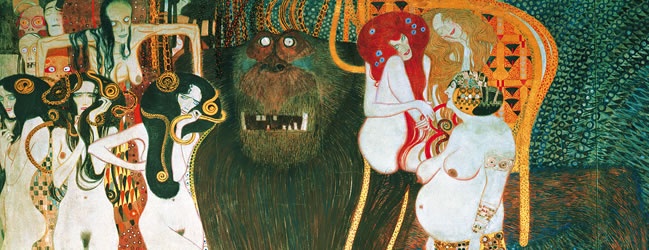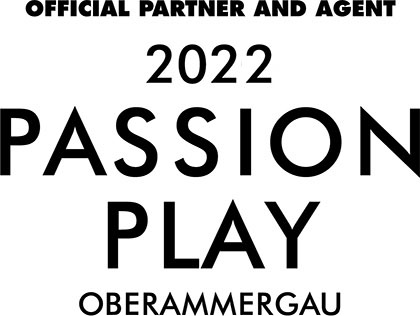Vienna Museums
The Hofburg is the location of the Schatzkammer (treasury), holding the imperial jewels of the Habsburg dynasty. The Sisi Museum (a museum devoted to Empress Elisabeth Amalie Eugenie of Austria) allows visitors to view the imperial apartments as well as the silver cabinet. Directly opposite the Hofburg are the Kunsthistorisches Museum, which houses many paintings by old masters, ancient and classical artifacts, and the Naturhistorisches Museum.
A number of museums are located in the Museumsquartier (museum quarter), the former Imperial Stalls which were converted into a museum complex in the 1990s. It houses the Museum of Modern Art, commonly known as the MUMOK (Ludwig Foundation), the Leopold Museum (featuring the largest collection of paintings in the world by Egon Schiele, as well as works by the Vienna Secession, Viennese Modernism and Austrian Expressionism), the AzW (museum of architecture), additional halls with feature exhibitions, and the Tanzquartier. The Liechtenstein Palace contains one of the world’s largest private art collections of the baroque. Castle Belvedere, built under Prinz Eugen, has a gallery containing paintings by Gustav Klimt (The Kiss), Egon Schiele, and other painters of the early 20th century, also sculptures by Franz Xaver Messerschmidt, and changing exhibitions too.
There are a multitude of other museums in Vienna, including the Albertina, the Military History Museum, the Technical Museum, the Burial Museum, the Museum of Art Fakes, the KunstHausWien, the Sigmund Freud Museum, and the Mozarthaus Vienna. The museums on the history of the city, including the former Historical Museum of the City of Vienna on Karlsplatz, the Hermesvilla, the residences and birthplaces of various composers, the Museum of the Romans, and the Vienna Clock Museum, are now gathered together under the group umbrella Vienna Museum. The museums dedicated to Vienna’s districts provide a retrospective of the respective districts.

Art Mile of Krems
The way to get the most out of the Kunstmeile is to be open to all spontaneous invitations and impulses, for there is much to discover in the varied “cultural landscape” between Artothek and WEINSTADT museum, with its galleries, forums and exhibition spaces. An absolute must is a visit to the Kunsthalle Krems and the neighbouring Caricature Museum. The Kunsthalle has taken as its focal point the presentation of both established and new artists of the modern age (from the end of the 19th century to the present).
The Caricature Museum sees itself as a mass-appeal platform for satirical art from Austria and abroad. Manfred Deix, one of Austria’s most important satirical artists, is represented in the museum with a permanent exhibit. All in all, the Kunstmeile Krems comprises some twenty cultural institutions and eight restaurants and wine bars.

Scandalous and superb – the Secession
For more than 100 years, the Vienna Secession has been an important centre for art and architecture. Shows and exhibitions by contemporary artists have constantly contributed to the public discourse on art.
Gustav Klimt’s wonderful Beethoven frieze, in the building’s basement, is today seen as one of the key works in the artist’s development, although at the time it was as controversial as the Secession itself. The imaginative, monumental and sometimes distressing narrative stretches over three painted walls and is based on Richard Wagner’s interpretation of Beethoven’s Ninth Symphony.
The magnificent building, with its golden “cabbage dome” was supposed to complement the RingstraBe buildings, but the Municipal Council only granted permission for the erection after the site was transferred to a plot on Friedrichstrasse. The architect, 30-year-old Joseph Maria Olbrich, has designed the building, which now represents an icon of Viennese Jugendstil (Art Nouveau).
Vienna: Art & Design. Klimt, Schiele, Hoffmann, Loos
Gustav Klimt, Egon Schiele and Josef Hoffmann were central to this artistic revolution which transformed Vienna into a dynamic metropolis at the forefront of ground-breaking modernism. The NGV will present a dazzling display of over 250 extraordinary works including painting, drawing, graphic and decorative art, furniture, fashion, jewellery and photography, most never before seen in Australia. In a most timely lead up to “Klimt Year 2012” visitors will experience the inventiveness and brilliance of this famous artist and a unique generation who laid the foundations for life in the twentieth century – a legacy still vividly alive today.

Encounter Klimt in Vienna!
Personal style against quaint critics
Starting as a decorative painter during the Ringstrasse era, Gustav Klimt’s early works include paintings for the stairwells of the Burgtheater and the Kunsthistorisches Museum (Museum of Fine Arts) as well as ceiling frescos at the Vienna University. After breathing arty life into the newly constructed monumental buildings of the Grunderzeit, Klimt was striving for the realization of his own formal language.
When he became head of the association of artists known as Secessionists, he conducted groundbreaking exhibitions in the Secession building, which were accompanied by numerous scandals. Their adversaries objected the Secessionists new approach: “We are not fighting against naked art and not against free art, but against ugly art.” But when Klimt was awarded the Grand Prix for his painting “Philosophy” at the Paris World’s Fair of 1900, he became a celebrity all across Europe and took the wind out of his critic’s sails.
Masterpieces in Vienna’s museums
The monumental “Beethoven Frieze”, Klimt’s contribution to the 1902 Secession Exhibition, today has been restored to its original location in the Secession. The painting marked the beginning of his “Golden Phase”, which found its peak with the world-famous “The Kiss” painted in 1907 and 1908, and exhibited in Vienna’s Upper Belvedere Palace.
Klimt was the painter of the upper-class society, whose female members he portrayed throughout his career. For several years the Portrait of Adele Bloch-Bauer I has been ranked as one of the world’s most expensive paintings. Less popular but higher in number, Klimt made some 3.000 drawings, representing an important focus of interest during his entire life.
Apart from the Secession and the Upper Belvedere Palace, Vienna’s Leopold Museum hosts Klimt’s most important works. With 400 specimens, the Wien Museum has the world’s largest collection of Klimt drawings, and the Albertina’s Klimt collection complements the awe-inspiring Viennese treasury of the Jugendstil mastermind.
The Klimt Villa
Those who want to soak up the atmosphere that surrounded Klimt while painting his famous tableaus should consider a visit to the Klimt Villa. His last and only surviving studio, located in Vienna’s Hietzing neighbourhood, will reopen in the late summer of 2012 after extensive renovation. It promises to offer insights into the artist’s working and living environment.

Salzburg
Salzburg, the birthplace of Wolfgang Amadeus Mozart, is dominated by churches, castles and palaces. Its picturesque old town is a UNESCO World Heritage Site.
Festung Hohensalzburg, the landmark of Salzburg, is Central Europe’s largest intact fortress and offers fantastic views of the city. Visit the Princely Residence, a magnificent early baroque edifice with splendid halls and a gallery featuring European paintings dating between the 16th and 19th century. The nearby vast Salzburg Dom is without doubt the main attraction of the old town. Inside there is the Romanesque font where Mozart was baptized.
Take time out to visit Mozart’s Geburtshaus, the place where the genial composer was born on January 27, 1756. The house is located in Getreidegasse, Salzburg’s most attractive and most visited shopping street with its high and narrow houses and romantic courtyards. Another highlight is Schloss Mirabell with its splendid gardens built by the baroque master builder Lukas von Hildebrandt.
At the foot of Monchsberg you will find the so-called Festival District with the two famous festival halls (architect: Clemens Holzmeister; 1956-1960) and the Felsenreitschule, a baroque masterpiece designed by Fischer von Erlach in 1693. South of the center of Salzburg’s old town is the popular Schloss Hellbrunn with the world-famous ‘Wasserspiele’ section containing many ingenious trick fountains and water-powered figures.
Some 4,000 cultural events combine to make Salzburg one of the most important cultural metropolises. The acclaimed Salzburger Festspiele, founded in 1920, is the high point in Salzburg’s culture calendar and includes concerts, opera and theatre performances.

Graz
The Styrian capital Graz, whose roots date back to the Roman age, lies on both sides of the River Mur, and is well-known for its medieval city center and modern architectural highlights.
Graz is dominated by the Schlossberg, a forested mountain which rises over the medieval town center and is crisscrossed with walks from all sides. At the top is a bell tower which formed part of the now demolished castle and once was the emblem of the city. Graz’s new landmark, the Kunsthaus (House of Modern Art) was constructed right next to the River Mur in 2003 where it floats like a giant, bluish bubble.
Graz, with a population of 250,000, has a great number of interesting sights ranging from old and time-honored to dynamic and modern. The late-gothic cathedral is reminiscent of the times when Graz was still an imperial seat. The baroque Mausoleum of Emperor Kaiser Ferdinand II next door is an impressive sight. The 5-story Landeszeughaus (provincial armory) houses an incredible 32,000 historic armor and weapons. The Landhaus with its Renaissance arcaded courtyard almost looks like a Venetian palazzo.
Joanneum, donated by prince Johann at the beginning of the 19th century, is Austria’s largest provincial museum and spotlights nature, culture and arts in Styria. The Murinsel is an artificial floating platform in the middle of the Mur. It was constructed by the New York artist and designer Vito Acconci on the occasion of Graz becoming the 2003 European Capital of Culture.
Special events include the “Styriarte”, a music festival dedicated mainly to early music, the “Steirischer Herbst” (Styrian Fall), a festival spotlighting theater, the fine arts, literature and music, the Jazz Summer, and the Eggenberg Palace Concerts. Event centers like Kunsthaus, Stadthalle, the Opera, the theatre and forum stadtpark host great cultural activities throughout the year.
















